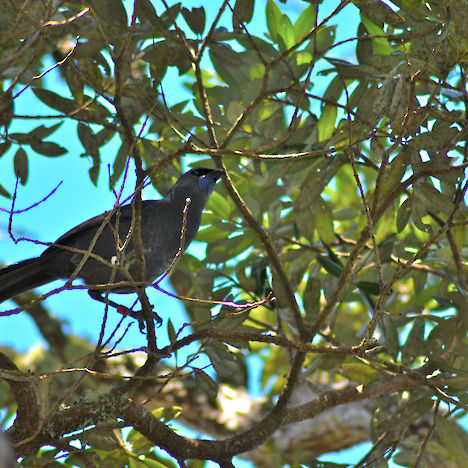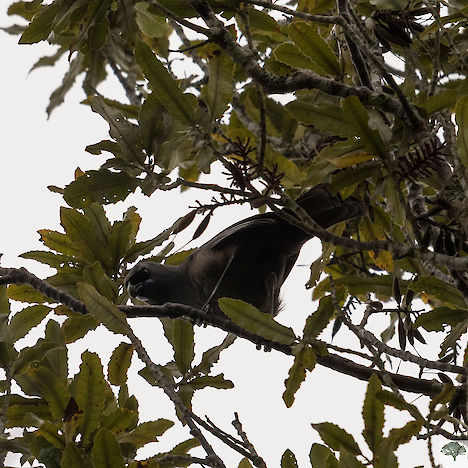Threat category:
At Risk: Recovering?Regions:
Northland, Auckland, Waikato, Bay of Plenty, Gisborne, Hawkes Bay, TaranakiDistribution:
Locally in indigenous forest of northern half of North Island
Description
- Large, blue-grey bird with distinctive blue wattles on head (pink wattles in juveniles) and black around the eye.
- Very melodious organ-like calls, mostly at dawn.
- Kokako are not strong fliers, but are relatively agile in trees, hopping around the branches and flying with short, gliding motions.
Interesting Facts
- Remnant populations survive primarily in the northern half of the North Island, particularly Waikato, Bay of Plenty and Te Urewera.National Park. However, the species has been reintroduced to many locations around the North Island, including Resolution Island in Dusky Sound, Fiordland National Park (where South Island kokako would have once lived).
- The species is largely restricted to tall, lowland podocarp hardwood forests.
- North Island kokako is no longer classified as threatened. The population is considered to be increasing as a result of intensive predator control and reintroductions into parts of its range where it had become extinct.
- There are now approximately 1,300 North Island kokako left.
- In years of abundant food supply, the breeding season can extend significantly, and North Island kokako can raise up to three broods.
- In 2012, the listing of South Island kokako (Callaeas cinerea) was changed from ‘extinct’ to ‘data deficient’. This was due to the records appraisal committee of the Ornithological Society of New Zealand accepting a sighting of a South Island kokako from the Inangahua Valley, near Reefton, made in 2007. The species had orange wattles.
Association with Plantations
- Small numbers are present in and adjacent to at least one plantation forest (Kaharoa) and have been known to nest in pine trees.
Threats
- Research has identified that the key predators of kokako are possums and ship rats. Stoats are also an important predator.
- Competition with introduced mammals for food can also limit the number of breeding attempts.
Management Options and Methods
- Habitat protection. Where kokako are present, protect indigenous vegetation, including corridors and riparian habitat. These areas will provide refuge during harvesting and access to other habitat areas.
- Reduce possum and rat numbers to less than 1% RTC. Also control mustelids and cats (refer to North Island brown kiwi section).
Monitoring Options
- Map territories, where present.
Further Information and Support
- North Island Kokako Recovery Plan 1999-2009. Threatened Species Recovery Plan Series No. 30. Department of Conservation, Wellington. Unlikely to be updated.
- Department of Conservation website: North Island kokako.
- Sinclair et al. 2006: Making endangered species safe: the case of the kokako of North Island, New Zealand. New Zealand Journal of Ecology 30: 121-130.
- Kaharoa Kokako Trust website.



